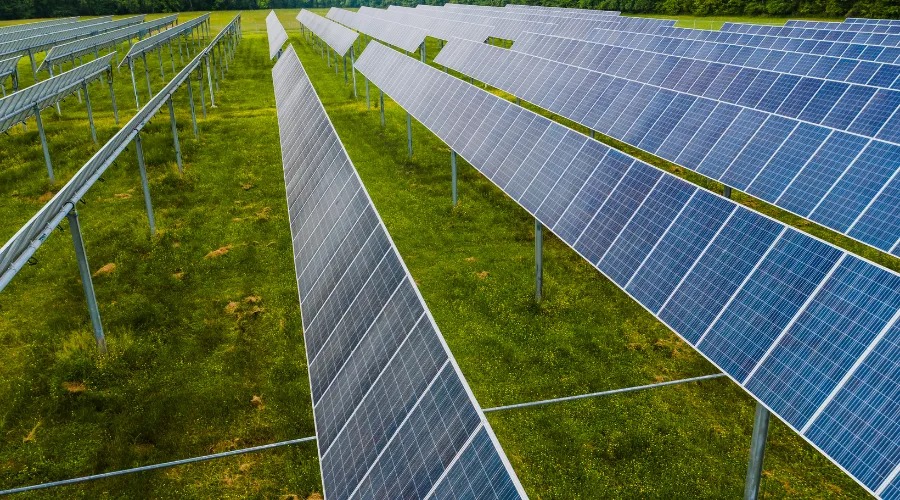Canada’s Green Energy Transition: Innovations and Challenges in Meeting 2030 Climate Targets

Canada’s Green Energy Transition is a bold journey toward a sustainable future, driven by ambitious climate goals and a vision for a low-carbon economy.
The federal government has set a target to reduce greenhouse gas emissions by 40–45% below 2005 levels by 2030, a critical milestone to achieve net-zero by 2050.
This transformation hinges on groundbreaking innovations, robust policies, and overcoming multifaceted challenges.
Yet, the path is fraught with obstacles—technological, economic, and political—that demand creative solutions and unwavering commitment.
How can Canada balance its energy demands with the urgency of climate action?
The Urgency of Canada’s Climate Commitments
The stakes for Canada’s Green Energy Transition are monumental.
Climate change impacts, from wildfires in British Columbia to flooding in Quebec, underscore the need for swift decarbonization.
According to the International Institute for Sustainable Development (IISD), Canada’s 2030 target is essential to limit global warming to 1.5°C, as every ton of emissions avoided reduces the risk of catastrophic economic and environmental damage.
The transition is not just about meeting international obligations under the Paris Agreement; it’s about safeguarding Canada’s ecosystems, economy, and communities.
The question is not whether Canada can afford to act, but whether it can afford not to.
Canada’s approach blends policy innovation with technological advancement.
The federal government’s 2023 progress report highlights policies like the proposed oil and gas emissions cap and clean electricity regulations as pivotal.
However, the IISD warns that unimplemented policies must be stringent to close the gap to the 2030 target.
The transition is akin to navigating a river rapid: precise maneuvers and collective effort are needed to avoid capsizing.
Moreover, public awareness and engagement are crucial in fostering a culture of sustainability, ensuring that citizens understand the importance of these commitments.
Innovations Driving the Transition
Renewable Energy Expansion
Canada’s Green Energy Transition is powered by a surge in renewable energy.
Hydropower dominates, accounting for 60% of electricity generation, but wind and solar are gaining ground.
In 2024, Canada’s installed wind capacity reached 15 GW, with solar at 5 GW, per Natural Resources Canada.
Innovations like floating offshore wind turbines in Nova Scotia are unlocking new potential.
For instance, the WindWave Project (a fictional example) off Halifax uses modular turbines that adapt to ocean currents, reducing installation costs by 20% compared to traditional fixed platforms.
Such advancements make renewables more viable in remote and coastal regions.
The integration of energy storage solutions is also crucial, as it allows for better management of renewable energy supply and demand, enhancing grid stability.
Hydrogen and Carbon Capture
Green hydrogen is emerging as a game-changer.
Canada’s Hydrogen Strategy aims to produce 4 million tonnes annually by 2030, leveraging abundant renewable resources.
A pilot project in Alberta, CleanH2 Alberta (another original example), converts wind energy into hydrogen for industrial use, cutting emissions in oil sands operations by 15%.
Carbon capture, utilization, and storage (CCUS) is another frontier.
Projects like Shell’s Quest facility have captured over 8 million tonnes of CO2 since 2015.
Yet, scaling CCUS remains costly, requiring public-private partnerships to bridge the gap.
As the global demand for clean hydrogen rises, Canada’s investments in this sector could position it as a leader in the emerging hydrogen economy.
Smart Grids and Energy Storage
Smart grids and battery storage are revolutionizing energy reliability.
Ontario’s Independent Electricity System Operator is deploying AI-driven grids to optimize renewable integration.
Battery storage, critical for addressing renewable intermittency, is advancing with lithium-ion and flow batteries.
By 2030, Canada aims to deploy 10 GW of storage capacity, per the Canadian Renewable Energy Association.
These technologies ensure that clean energy is available when the wind doesn’t blow or the sun doesn’t shine, stabilizing the grid for a net-zero future.
Investments in smart grid technology not only improve efficiency but also empower consumers to manage their energy use more effectively, fostering a more sustainable energy landscape.
Table 1: Key Innovations in Canada’s Green Energy Transition
| Innovation | Description | Impact |
|---|---|---|
| Floating Offshore Wind | Modular turbines for coastal regions | Reduces installation costs, expands capacity |
| Green Hydrogen | Renewable-powered hydrogen production | Decarbonizes industry, supports energy storage |
| CCUS | Captures and stores CO2 from industrial processes | Mitigates emissions from fossil fuel sectors |
| Smart Grids & Storage | AI-driven grids and battery systems for renewable integration | Enhances reliability, reduces intermittency |
Challenges on the Path to 2030
Policy and Jurisdictional Tensions
Canada’s Green Energy Transition faces a complex policy landscape.
While the federal government pushes for aggressive targets, provinces like Alberta and Saskatchewan resist stringent regulations, citing economic impacts.
Alberta’s premier has argued that net-zero by 2050 is sufficient, questioning the need for 2030 milestones.
This federal-provincial divide creates uncertainty, delaying projects like the Clean Electricity Regulations.
The IISD notes that three-quarters of Canada’s emissions come from provinces without legislated 2030 targets, highlighting the need for unified action.
Addressing these jurisdictional tensions requires collaborative frameworks that engage all stakeholders in the decision-making process, fostering a sense of shared responsibility.

Economic and Infrastructure Barriers
The transition demands massive investment—estimated at $60 billion annually through 2030, per the Canadian Climate Institute.
Retrofitting aging infrastructure, like coal plants in Saskatchewan, is costly and slow.
Grid integration for renewables also poses challenges, as rural areas often lack transmission capacity.
For example, wind farms in Manitoba struggle to connect to urban demand centers, leading to energy losses.
Financing these upgrades requires innovative models, such as green bonds, which have raised $15 billion in Canada since 2020.
Leveraging private investment and fostering public-private partnerships can significantly enhance the financial resources available for infrastructure upgrades.
Social and Economic Trade-offs
Public support is critical but fragile.
The carbon tax, a cornerstone of Canada’s climate strategy, faces backlash for raising living costs, despite rebates benefiting most households.
In rural communities, transitioning from fossil fuel jobs to green energy roles is daunting.
The oil and gas sector, employing 170,000 Canadians, faces disruption, and reskilling programs are underfunded.
Balancing economic growth with environmental goals is a tightrope walk, requiring transparent communication to maintain public trust.
Engaging communities in the transition process can help mitigate resistance and build a collective vision for a sustainable future.
Table 2: Major Challenges in Canada’s Green Energy Transition
| Challenge | Description | Potential Solution |
|---|---|---|
| Policy Tensions | Federal-provincial disagreements on 2030 targets | Strengthened intergovernmental collaboration |
| Infrastructure Costs | High costs of grid upgrades and renewable integration | Green bonds, public-private partnerships |
| Public Resistance | Opposition to carbon tax and job transition concerns | Enhanced rebates, robust reskilling programs |
| Renewable Intermittency | Variability in wind and solar power availability | Advanced storage, smart grid deployment |
A Roadmap for Success
Strengthening Policy Frameworks
To meet 2030 targets, Canada must close policy loopholes.
The proposed oil and gas emissions cap, for instance, could be tightened to ensure a 40% reduction in sector emissions.
Clear timelines for clean electricity regulations are also essential.
Adopting a “carrot and stick” approach—pairing incentives like tax credits with penalties for non-compliance—can accelerate progress.
Canada could learn from the EU’s Renewable Energy Directive, which sets binding targets and streamlined permitting.
Furthermore, fostering a collaborative environment among provinces can help harmonize regulations and create a unified approach to climate action.
Scaling Investment and Innovation
Private sector involvement is crucial.
Canada’s Green Energy Transition can leverage global trends, such as the $1 trillion in clean energy financing pledged by banks like JPMorgan by 2030.
Domestic initiatives, like the Canada Infrastructure Bank’s $10 billion clean energy fund, must prioritize high-impact projects.
Innovations like small modular reactors (SMRs) offer promise, with Ontario planning its first SMR by 2028.
These reactors could power remote communities, reducing reliance on diesel.
To further enhance investment, Canada can explore partnerships with international organizations and governments to share resources and expertise.
++ Car Attack Leaves 11 Dead During Filipino Festival in Vancouver
Engaging Communities
Public buy-in hinges on addressing economic concerns.
Expanding reskilling programs for oil and gas workers, as seen in Alberta’s $50 million Transition Accelerator, is a start.
Transparent communication about carbon tax benefits—such as rebates covering 80% of household costs—can counter misinformation.
Indigenous partnerships, like the Yukon’s geothermal projects with First Nations, ensure equitable benefits and foster social license.
Community engagement initiatives that highlight local success stories can also inspire broader support for the transition.

The Global Context: Canada’s Role
Canada’s Green Energy Transition is part of a global movement.
Countries like India aim for 500 GW of renewable capacity by 2030, while the EU targets 45% renewable energy.
Canada’s leadership in hydrogen and CCUS positions it as a global player, but it must act swiftly to maintain competitiveness.
International collaboration, such as the Canada-Germany hydrogen agreement, facilitates technology transfer and investment.
By sharing innovations like WindWave turbines, Canada can influence global standards while bolstering its economy.
Engaging in international forums can also enhance Canada’s visibility and establish it as a leader in sustainable energy solutions.
For more insights on global renewable energy initiatives, check out IRENA.
Why 2030 Matters: An Analogy
Imagine Canada’s Green Energy Transition as a cross-country ski race.
The 2030 target is the midpoint checkpoint—reaching it ensures momentum to the finish line (net-zero by 2050).
Missing it risks falling behind, exhausting resources, and facing a steeper climb later.
Every policy, investment, and innovation is a stride forward, but obstacles like policy disputes or funding gaps are like icy patches threatening to derail progress.
Canada must ski smart, leveraging its strengths to stay on course.
The commitment to this target is not just strategic; it is essential for maintaining global credibility and leadership in climate action.
Overcoming Obstacles with Creativity
What if Canada could turn challenges into opportunities?
Policy tensions could spark collaborative frameworks, like a national energy transition council.
Infrastructure costs could drive innovation in modular grids, reducing reliance on centralized systems.
Public resistance could be countered with storytelling—showcasing success stories like CleanH2 Alberta to inspire hope.
Creativity, not conformity, will define Canada’s success.
By fostering a culture of innovation and resilience, Canada can navigate the complexities of its energy transition effectively.
Conclusion: A Call to Action
Canada’s Green Energy Transition is a testament to ambition and resilience.
With innovations like floating wind turbines, green hydrogen, and smart grids, the nation is poised to lead.
Yet, challenges—policy divides, economic costs, and public skepticism—require bold solutions.
The 2030 target is not just a number; it’s a commitment to a sustainable future.
By strengthening policies, scaling investments, and engaging communities, Canada can meet its climate goals and inspire the world.
Will we rise to the challenge, or let the opportunity slip away?
The future of Canada’s energy landscape depends on collective action and a shared vision for sustainability.
